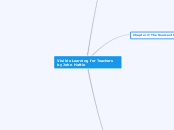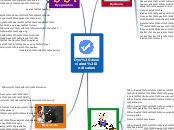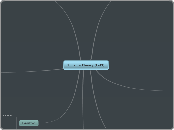Wolfe, P. (n.d.). Brain-Compatible Learning: Fad or Foundation? Retrieved January 20, 2017, from http://www.aasa.org/SchoolAdministratorArticle.aspx?id=7362
Brain-Compatible Learning
Accepted Ideas
Emotion is a primary catalyst in the learning process
Environment must be physically and psychologically safe for learning to occur
Brain works differently if threatened
Emotion is dominant over cognition
Amygdala starts fight/flight responses
Brain hard-wired to remember experience with an emotional component
Memory is not unitary
Two types of memory
Procedural
Role rehearsal
Requires many repetitions (not best for declarative)
Skills and habits you engage in with conscious recall
Declarative
Elaborative rehearsal
Everyday memory, information you can declare
Memory is not static
Memory decays over time as new experiences take over old ones
Minimized by using rehearsal strategies
Visualizing, writing, symbolizing, singing, semantic mapping, mnemonics
Memory is not stored in a single location in the brain
When you recall, you must reconstruct
Experience enters brain and is deconstructed and distributed
Location in the parietal lobes
Source memory in the frontal lobes
Visual images in the occipital lobes
The affect (emotions) in the amygdala
Experience shapes the brain
Strongest connections from concrete experience
Learning is making connections between brain cells
Learning experiences change and reorganize brain’s structure/physiology
Only organ that shapes itself from interactions with environment
Intuitive Knowledge
Begin to incorporate in our classroom and schools what we have learned about the brain
Do not wait for everything to be complete
Intensify our collaboration with the researchers
Teachers and scientists should work together
Marry the findings from neuroscience with other fields
Include other fields like behavioral and cognitive psychology and educational research
Learn how to determine whether a study is valid or not
Teachers should ask
What specific benefit will be realized?
Will it work in the classroom?
Questions to determine validity of study
Are there similar studies with contradictory findings?
Has the study been replicated?
What was the methodology used?
Was there a control group?
What were the ages and characteristics?
How many subjects in the study?
Become literate in the general structure and function of the brain
Learn terminology
Classroom Data
Focus on studies with student learning in mind and implications for teachers
Example 3: Connection between music and math
Exceptional gains in math skills that require good temporal spatial reasoning
Combined a piano and a computer program with elementary school-age children
Study by Shaw
Example 2: Attempt at improving ability to read
Combining brain imaging with cognitive-behavioral work
Brain with dyslexia functions differently then typical brain processing phonemes
Study by Shaywitz, Shaywitz, and Pugh
Example 1: Reading difficulty from auditory processing delay
Program called Fast ForWord
Computer corrected this delay by speeding up processing of sounds that make up the written word
Study by Tallal, Merzenich, and Sooy
Untested Strategies
Teachers who accept untested data at risk of pseudoscience
Should wait for clinical trials and testing before accepting strategies
Media can exaggerate or fabricate results
Example 2: Sugar improves alertness and memory
Did not work on college students, K-12 not tested
Misconstrued: Worked on the elderly
Example 1: Music increases IQ
False: Increased spatial temporal reasoning
Hemispheric Notions
Teachers forced to use intuition
At whim of boards and politicians
May make decisions unrelated to education
Creates a folklore profession
Lacks scientific knowledge
False that we only use 10% of brain
Right/Left brain concept
Inaccurate to state a preference for one side over another
Specialized functions but always work together









